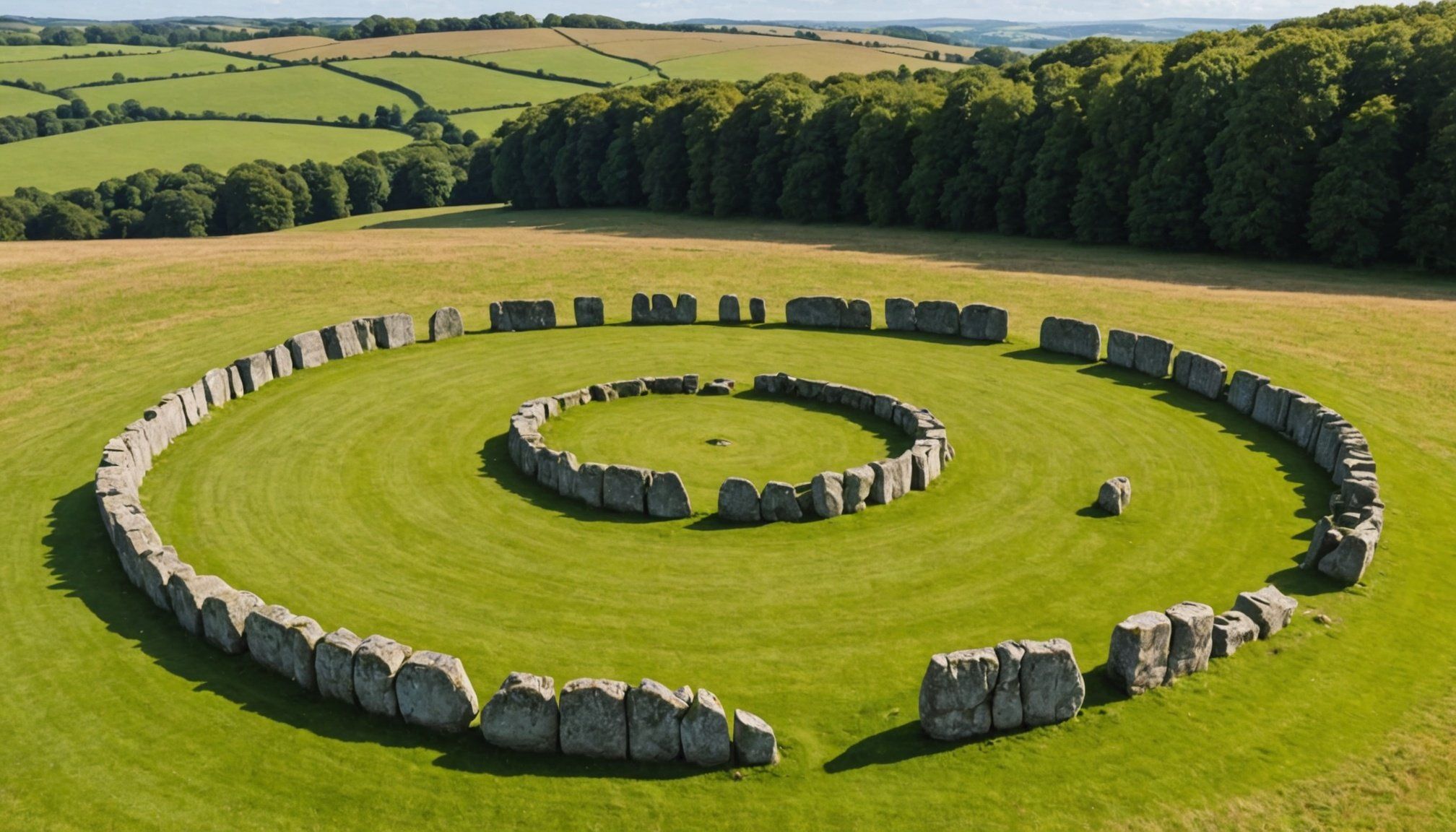Overview of Hidden Prehistoric Stone Circles in the UK
Exploring the hidden stone circles across the UK offers a fascinating glimpse into the nation’s prehistoric past. These understated prehistoric sites are critical to understanding the complex tapestry of UK historical landmarks. Unlike the renowned Stonehenge, these lesser-known stone circles maintain an air of mystery and intrigue, often found off the beaten path, away from bustling tourist routes.
The importance of these sites to UK heritage cannot be overstated. Many of these circles were pivotal in ancient rituals and alignments, serving as focal points in the lives of prehistoric communities. They contribute significantly to the historical narrative, providing insight into the spirituality and social structures of the time.
This might interest you : Discover the Best Guided Walking Tours of Cambridge”s Historic Colleges: Your Ultimate Guide!
A comparison between these hidden circles and Stonehenge reveals stark contrasts. While Stonehenge garners considerable attention, hidden stone circles offer a quieter, more intimate experience for those willing to seek them out. They boast unique features and locations that distinguish them from their more famous counterpart.
Geographically, the distribution of these circles is uneven, yet intriguing. Wales, Scotland, and northern England hold significant numbers, often nestled in rural landscapes. Each site possesses its unique character, enhancing the rich prehistoric landscape of the UK. Understanding these hidden stone circles is vital to appreciating the full scope of the UK’s ancient history.
Additional reading : Experience Authentic UK Hog Roasts: Your Guide to the Best Venues
Notable Hidden Stone Circles
Ancient architecture has long intrigued both the casual visitor and the dedicated historian. The historical significance of these structures cannot be overstated, as they offer a unique window into the past.
The Rollright Stones
Situated on the border of Oxfordshire and Warwickshire, the Rollright Stones are a notable stone circle steeped in myths and legends. Comprising three distinct groups of stones, the Rollright Stones are legendarily linked to a king and his knights who were turned into stones by a witch. Unique in their architecture, these stones have fascinated visitors for centuries. While the site is generally accessible to the public, travellers are encouraged to respect the area due to its cultural and historical significance.
The Nine Stones of Tregeseal
The Nine Stones of Tregeseal are another important site within the UK’s landscape of ancient architecture. Located in Cornwall, these stones date back to the late Neolithic period. According to local myths, the stones represent maidens who were turned to stone for dancing on a Sunday. Accessible to visitors, the site provides an immersive experience into the historical tapestry of the region’s ancient architecture.
Callanish Stones
The Callanish Stones in Scotland form a notable stone circle that captures visitors’ imaginations with its impressive layout. Erected in the late Neolithic era, these stones are surrounded by myths related to lunar and solar alignments. For those visiting the island of Lewis, the site is reachable and offers an opportunity to engage directly with one of the region’s most significant ancient monuments.
Guided Tour Options
Engaging in guided tours is ideal for those seeking a comprehensive stone circle travel experience. These tours offer a seamless way to explore historic sites with ease. Renowned tour companies provide unique itineraries that enhance your journey.
Companies like Circle Adventures and Historic Pathways specialise in stone circle tours. They deliver meticulously crafted itineraries, allowing travellers to explore multiple destinations. A typical itinerary ranges from a day trip to extended multi-day tours.
Day trips often cover top destinations like Stonehenge and Avebury, offering a rich glimpses into ancient history. Extended tours might take you further afield, exploring less-visited sites like Castlerigg and Callanish, enriching your travel experiences further.
Pricing structures for these tours vary. Day trips generally start from £50, whereas extended tours might range between £300 to £600, depending on inclusions like accommodation and meals. Some companies offer seasonal discounts or group booking promotions, providing a cost-effective way to explore these mystical monuments.
Booking information is straightforward, typically accessible on the company’s website. Early booking is often advised, as these unique expeditions are sought after. Choosing guided tours provides convenience and insight, bringing history vividly to life.
Historical Context and Cultural Significance
Stone circles, such as those found in ancient civilizations, played a significant role in the social and cultural practices of early societies. These structures served diverse purposes, from ceremonial sites to calendars. In particular, communities often gathered at these places for rituals, which were essential in anchoring the social fabric of their time. The significance of stone circles extends beyond the physical structures; they were pivotal in cultural transmission, embodying a rich tapestry of traditions and beliefs.
Numerous archaeological findings underscore the importance of these prehistoric monuments. For instance, careful examination of these sites has revealed artifacts such as pottery shards and tools, shedding light on the daily lives of those who built them. Research conducted at these sites further suggests complex understanding of astronomical events by ancient peoples, as certain formations align with celestial bodies.
Furthermore, myths and legends surrounding these stone circles have only deepened their mysterious allure. Stories passed down through generations often attribute supernatural or mystical powers to these constructions, linking them to legendary figures or gods. Such narratives not only enhance the sites’ mystique but also keep the traditions of cultural practices alive, offering valuable insights into ancient belief systems.
Travel Tips for Visiting Stone Circles
When planning your visit to stone circles, timing is everything. The best seasons to travel are typically spring and early autumn. During these periods, the weather is pleasantly mild, and the sites are less congested with tourists, offering an optimal experience.
Choosing appropriate accommodation is crucial for your stay. Local inns and quaint bed-and-breakfasts are often recommended, as they provide an authentic taste of the area. When it comes to dining, local pubs and restaurants frequently offer a delightful array of traditional dishes that will enrich your cultural experience.
Safety is paramount, so visitors should be cautious of the rugged terrain. Wear sturdy footwear to navigate uneven paths safely. Also, to respect these ancient sites, adhere strictly to rules which often prohibit climbing on or touching the stones.
Being considerate of your surroundings not only enhances your experience but helps in preserving the beauty and history of these eternal structures. Keeping these travel tips in mind will ensure a memorable and respectful visit, making your journey both enriching and responsible.
User Reviews and Experiences
Visitors often share insightful testimonials about their encounters, providing valuable travel feedback for future adventurers. By delving into these personal experiences, aspiring tourists can gain a deeper understanding of what to expect and how to maximise their visit.
Highlighting Memorable Tours
Among the most cherished experiences are guided tours that exhibit both historical significance and natural beauty. Many visitors highlight their tours as memorable due to the engaging and knowledgeable tour guides who bring the site’s history to life. For example, a visitor might recall a tour guide’s enthralling storytelling at a historic landmark, making a simple stroll feel like an epic journey through time.
Common Visitor Impressions
A recurring theme in visitor testimonials is the unpredicted emotional connection felt upon exploring new destinations. Some travellers express awe at breathtaking landscapes, while others are captivated by architectural marvels. Nevertheless, a few visitors note aspects that fell short of their expectations, often relating to crowded areas or long wait times.
Recommendations for First-Time Visitors
For those venturing out for the first time, experienced travellers suggest starting with tours that offer a comprehensive overview. They recommend arriving early or opting for exclusive tours to avoid crowds. A tip frequently shared is to engage with local guides for a more authentic experience, as their insights often enrich one’s understanding of the destination.
Visual Guides and Resources
For those interested in elevating their storytelling, photography serves as a powerful tool. Capturing stunning visuals at recommended locations can significantly enrich narratives. Sites with diverse landscapes offer photographers opportunities to play with light, composition, and visual representation. National parks, architectural landmarks, and local markets present vibrant subjects for stunning captures.
Utilising online resources can further enhance one’s photography skills and provide inspiration. Platforms like photography blogs offer tips on capturing perfect shots and advice on equipment. Online galleries showcase the work of seasoned photographers, serving as a muse for aspiring talents. Exploring these resources can ignite new creative ideas and techniques that you can incorporate into your practice.
Visuals are not just about aesthetics— they also add depth and understanding. Site layouts and complex features can be better comprehended when represented visually. Whether it’s diagrams, maps, or photo sequences, the visual representation of information makes intricate details more accessible. This is especially beneficial for educational purposes, where a picture truly is worth a thousand words.
In summary, merging photography with well-chosen online resources fosters a deeper connection between the storyteller and their audience, enhancing the overall narrative experience.










